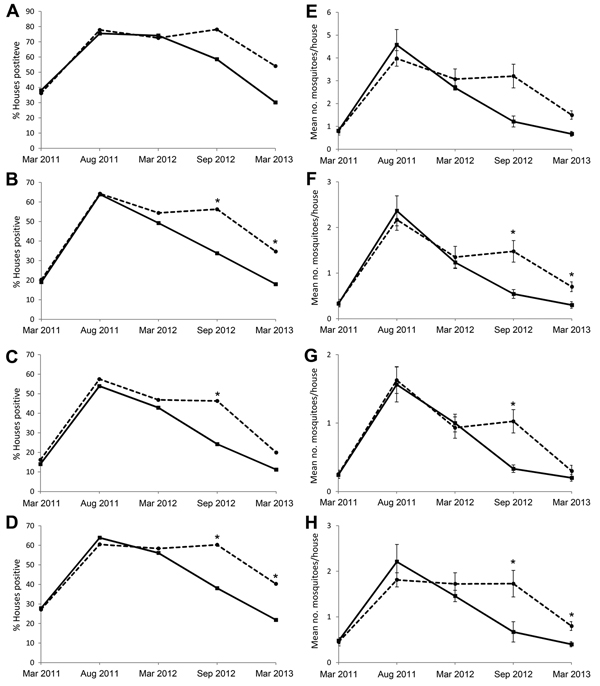Use of Insecticide-Treated House Screens to Reduce Infestations of Dengue Virus Vectors, Mexico
Pablo Manrique-Saide, Azael Che-Mendoza, Mario Barrera-Perez, Guillermo Guillermo-May, Josue Herrera-Bojorquez, Felipe Dzul-Manzanilla, Cipriano Gutierrez-Castro, Audrey Lenhart, Gonzalo Vazquez-Prokopec, Johannes Sommerfeld, Philip J. McCall, Axel Kroeger, and Juan I. Arredondo-Jimenez
1
Author affiliations: Universidad Autónoma de Yucatan, Merida, Mexico (P. Manrique-Saide, M. Barrera-Perez, G. Guillermo-May, J. Herrera-Bojorquez); Servicios de Salud de Yucatán, Gobierno del Estado de Yucatan, Merida (A. Che-Mendoza); Servicios Estatales de Salud de Guerrero, Chilpancingo, Mexico (F. Dzul-Manzanilla, C. Gutierrez-Castro); Centers for Disease Control and Prevention, Atlanta, Georgia, USA (A. Lenhart); Emory University, Atlanta (G. Vazquez-Prokopec); World Health Organization, Geneva, Switzerland (J. Sommerfeld, A. Kroeger); Liverpool School of Tropical Medicine, Liverpool, UK (P.J. McCall); Centro Nacional de Programas Preventivos y Control de Enfermedades, Mexico City, Mexico (J.I. Arredondo-Jimenez)
Main Article
Figure 2

Figure 2. Infestation indices for adult Aedes aegypti mosquitoes in intervention (solid lines) and control (dashed lines) households before and after intervention in Acapulco, Mexico, as measured during dry (March) and wet (August–September) season cross-sectional surveys, 2011–2013. A–D) Vector prevalence: percentage of houses positive for A) all adults; B) all females; C) blood-fed females; D) males. E–H) Vector density: mean number per infested house for E) all adults; F) all females; G) blood-fed females; H) males. Error bars indicate SEs. Fitting of insecticide-treated window and door screens commenced during April 2012. Asterisks (*) denote dates when the index was significantly different between treated and control groups.
Main Article
Page created: January 21, 2015
Page updated: January 21, 2015
Page reviewed: January 21, 2015
The conclusions, findings, and opinions expressed by authors contributing to this journal do not necessarily reflect the official position of the U.S. Department of Health and Human Services, the Public Health Service, the Centers for Disease Control and Prevention, or the authors' affiliated institutions. Use of trade names is for identification only and does not imply endorsement by any of the groups named above.
